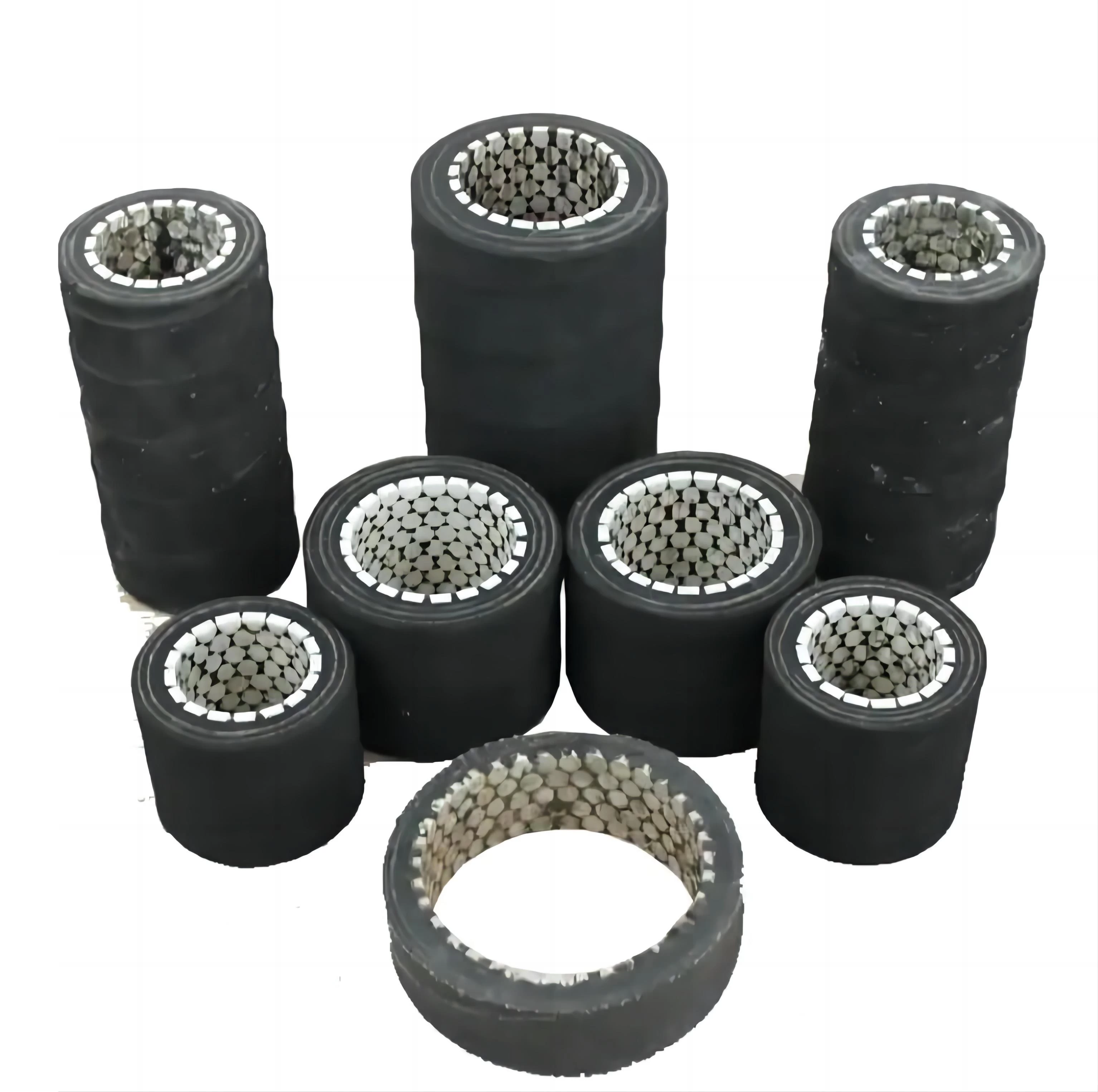The emergence of ceramic roller coating technology has significantly addressed issues related to roller wear, limited lifespan, belt misalignment, and slippage. Traditionally, ceramic rubber rollers were crafted by adhering rubber ceramic plates through cold adhesion techniques. However, with the latest advancements in precision ceramics, the integration of whole hot sulfuration technology in manufacturing new-gen ceramic rubber rollers has eradicated gaps, substantially boosting waterproofing capabilities, and fracture resistance.
The innovative technique of ceramic roller coating presents a revolutionary solution to the shortcomings of conventional roller coatings. This article delves into the transformation from the traditional cold adhesion methods to the groundbreaking hot sulfuration process and its far-reaching implications.
The contemporary ceramic roller coating technology is designed to overcome historical challenges encountered in roller coatings, revolutionizing their effectiveness and durability.

Previously, roller coatings faced myriad issues such as rapid wear, shortened lifespan, and susceptibility to damage from belt misalignment. The advent of ceramic roller coating techniques has provided substantial advantages in resolving these persistent problems.
The shift from cold adhesion to hot sulfuration has resulted in remarkable improvements. The hot sulfuration technique boasts significantly higher adhesive strength, surpassing 12N/mm in fracture resistance, marking a 50% increase over cold adhesion, thereby greatly reducing coating detachment instances.
Additionally, the absence of gaps in hot sulfuration technology prevents moisture and debris ingress, enhancing performance even in humid conditions. The utilization of advanced wear-resistant formulations in the hot sulfuration process has elevated the tear strength and wear resistance of the rubber base.
The overall enhancement in ceramic roller coating through hot sulfuration marks a comprehensive upgrade. It encompasses advancements in rubber formulations, sulfuration adhesion techniques, and an exponential amplification in roller performance and user experience.
This significant leap from traditional ceramic roller coatings to the integrated hot sulfuration technique signifies a monumental improvement in various aspects, promising heightened roller performance and extended usability.
The integration of hot sulfuration in ceramic roller coatings represents a pivotal advancement in roller technology. Its unparalleled adhesion strength, improved waterproofing, reduced environmental impact, and enhanced wear resistance mark a new era in roller coating efficiency and longevity.
1.Does hot sulfuration significantly increase the lifespan of ceramic roller coatings?
Hot sulfuration dramatically improves the durability of ceramic roller coatings, reducing detachment instances and enhancing their overall lifespan.
2.How does hot sulfuration impact environmental sustainability compared to cold adhesion techniques?
Hot sulfuration reduces the usage of cleaning agents, solvents, and adhesives, making it a more environmentally friendly choice.
3.Can hot sulfuration accommodate rollers of different sizes?
Yes, hot sulfuration allows for the customization of roller coatings, ensuring a better fit with various roller dimensions.
4.Is hot sulfuration more cost-effective than traditional cold adhesion methods?
Despite its advancements, hot sulfuration may involve slightly higher initial costs but provides long-term cost savings due to increased durability.
5.Does hot sulfuration affect the overall performance of rollers in different environmental conditions?
Hot sulfuration significantly enhances roller performance, even in moist or challenging working conditions, due to its superior waterproofing and sealing properties.

Submit your demand,
we will contact you ASAP.

Sanxin New Materials Co., Ltd. focus on producing and selling ceramic beads and parts such as grinding media, blasting beads, bearing ball, structure part, ceramic wear-resistant liners, Nanoparticles Nano Powder

